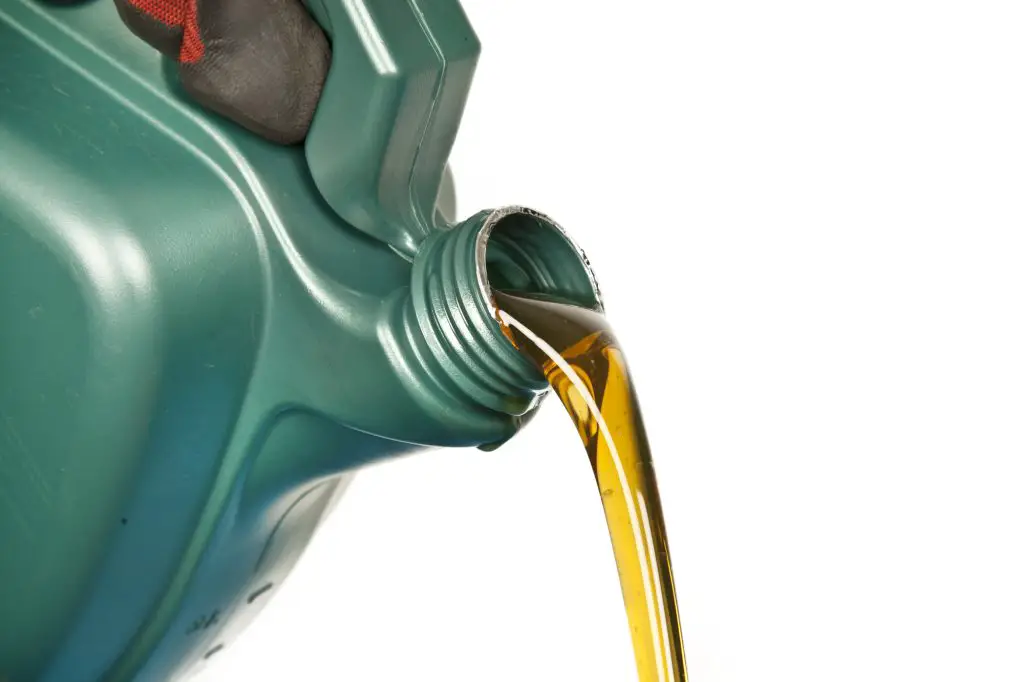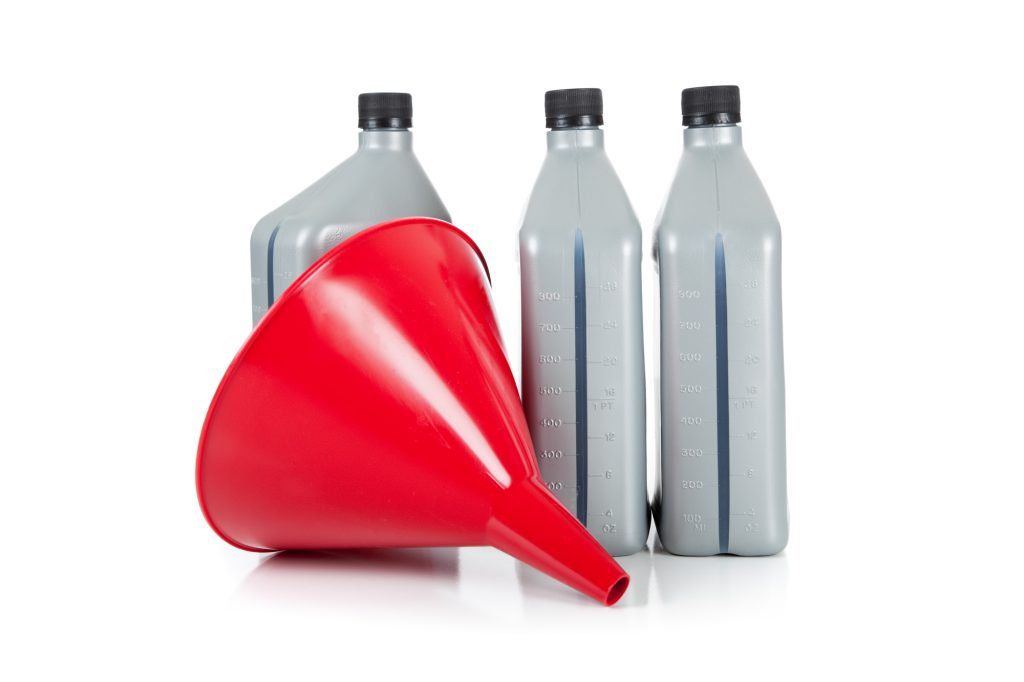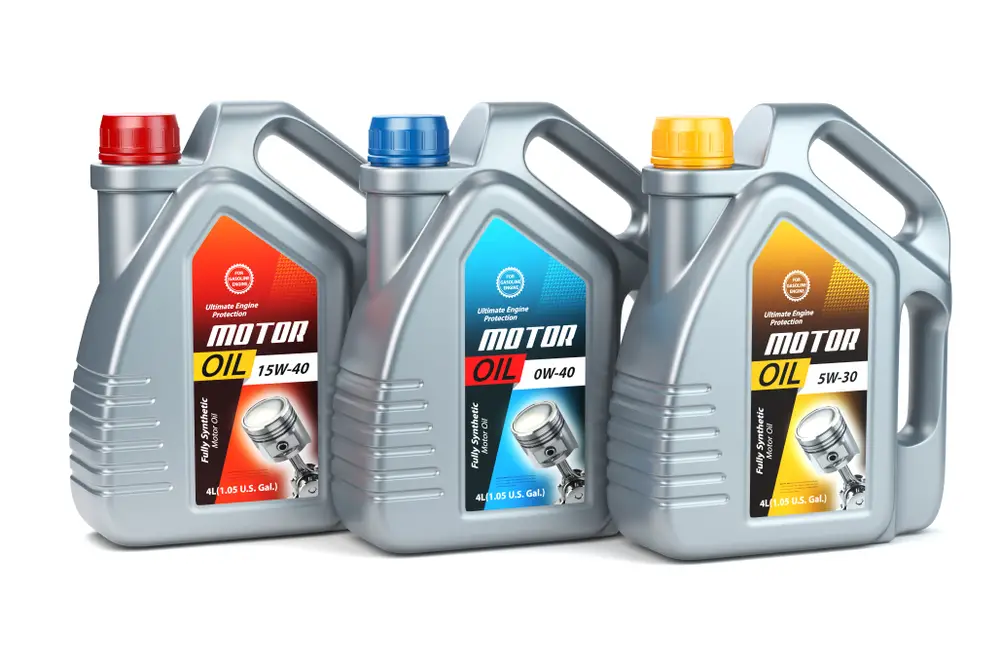As a lawn mower owner, it’s easy to forget that your lawn mower requires regular oil changes. It’s even easier to struggle to figure out what kind of oil a lawn mower takes. To help, we’ve put together this guide!
Lawn mowers take oil according to manufacturer recommendations in their manuals. There are a variety of oils and oil types, which are designed for different purposes and temperatures. Keeping these in mind improves your lawn mower performance and lifespan.
In this content you’ll learn:
The Importance Of Using The Correct Oil For A Lawn Mower

It’s important to follow the manufacturer’s recommendations regarding the correct oil for your lawn mower. Different types of oil are used for different engines and working conditions. If you use the wrong oil for your lawn mower, you risk damaging the internal components and shortening its lifespan.
Understanding Lawn Mower Oil Types And Their Rating System
To understand lawn mower oil types, it’s essential first to understand viscosity. Viscosity is an oil’s chemical properties when exposed to different temperatures. The higher the viscosity, the thicker and less runny the oil is.
When your lawn mower is cold, and you start it for the first time, the engine requires lubrication of all the internal moving parts. A low-viscosity oil will flow more easily through the engine as it heats up, resulting in less wear and tear.
In addition, oil is rated using the Society of Automotive Engineers (SAE) viscosity grading scale. When looking through your lawn mower manual, you’ll see oil rated at SAE 30, SAE 10W-30, or SAE 10W-40. The first number refers to an oil’s viscosity at 0° Fahrenheit (-17.8° Celsius) or lower temperatures.
The lower the first number, the easier the oil will flow at very low temperatures. The “W” refers to winter. There are six winter classes of oil, including 0W, 5W, 10W, 15W, 20W, and 25W.
The second number represents the oil’s viscosity at 212° F (100° C) or higher temperatures. The higher this number, the thicker and more viscous the oil.
Once the lawn mower reaches optimum operating temperature, the recommended oil will flow correctly throughout the engine, lubricating the internal components with the least wear and tear. The manufacturer recommends an oil rating based on the operating temperature in various climates and working conditions.
The Difference Between Single-Grade and Multi-Grade Oils
Multi-grade oils are designed to work across various temperatures, providing sufficient lubrication to lower wear and tear on the engine.
A single- or mono-grade oil has no lower range and is designed for use at one particular temperature. Using a multi-grade oil allows you to use your lawn mower in a variety of temperatures while still protecting it from wear.
Also, multi-grade oils reduce your oil consumption past the piston rings. It sounds like a good deal with multi-grade oils making starting easier in cold conditions.
But, the thinner multi-grade oil, not being as sticky as a single-grade oil, doesn’t remain on the cylinder walls as the piston moves up and down. This results in additional wear on the piston and reduces engine life.
The Benefits Of Synthetic Oil For Lawn Mowers
Before using synthetic oil in your lawn mower, check your manual to see if the oil meets all the required specifications.
While synthetic oil can last longer than regular petroleum oil, you should stick to the oil change schedule recommended for your lawn mower. Changing your lawn mower oil every 50 hours or once per year is usually recommended, whichever comes first.
What Kind Of Lawn Mower Oil Is Best?

It’s always best to follow the recommendations in your lawn mower manual to avoid voiding warranties and guarantees.
Here’s a list of popular lawn mower manufacturers and their oil specifications:
However, I recommend using single-grade oil in the summer months, especially if you live in the hot, southern states. Then change your oil to a multi-grade one in the fall if you plan on using your lawn mower when it’s cold. If you live in the colder northern states, I recommend using a multi-grade oil exclusively.
For further recommendations, please see the list below:
- SAE 30 – Good for warmer climates.
- SAE 10W-30 – Suitable for various temperatures (improves cold-weather starting).
- Synthetic SAE 5W-30 – Best all-around protection with lower oil consumption.
- SAE 5W-30 – Suitable for very cold climates.
- SAE 15W-50 – Suitable for a wide temperature range. Recommended for commercial lawn mowers.
How To Select And Use The Correct Oil For Your Lawn Mower
There are several steps in this process. Taking them in order each and every time ensures a smooth maintenance process and a longer lifespan for your lawn mower.
As with many processes with your lawn mower, this begins with consulting your manual.
1 – Consult Your Lawn Mower’s Manual For Oil Recommendations
Once you have the lawn mower manual, locate the section that deals with your lawn mower’s oil requirements. It will provide specific details of the recommended oil type. This may include conventional oil, synthetic oil, or a specific brand of oil together with the viscosity grade.
An example of this would be SAE 10W-30.
Also, follow the recommended oil guidelines for the operating conditions you expect to encounter when mowing your lawn. Consider extreme temperatures, either hot summer or cold winter days.
In addition, take note of recommended brands, as this ensures optimal performance and may affect your warranty.
2 – Decide What Oil You’re Going To Use
Decide on your choice of oil viscosity grade related to the flow rate at different temperatures. Thinner, lower-rated oil for cold temperatures and thicker, higher-rated oil for hotter conditions.
3 – Buy The Oil And Replace Your Lawn Mower’s Old Oil
Purchase the recommended quality and type of oil from an auto parts store or online retailer.
Next, drain your lawn mower’s oil following the instructions in the manual. Once all the oil is drained, refill the engine with the recommended quantity of oil. Wait for the oil to settle for a few minutes, and then check that the oil level is correct on the dipstick or inspection port.
Conclusion
Following these steps, I’ve run and maintained lawn mowers for over 40 years. Some of these machines have lasted longer than that without needing a rebuild. I inherited these from my father, who also religiously changed the oil and oil filters yearly according to the manufacturer’s recommendations.
Now, it’s your turn. Let me know what you’ve learned or what other questions you have about the oil lawn mowers take. Also, let me know how your oil replacement process goes. I look forward to reading everything in the comments below!
